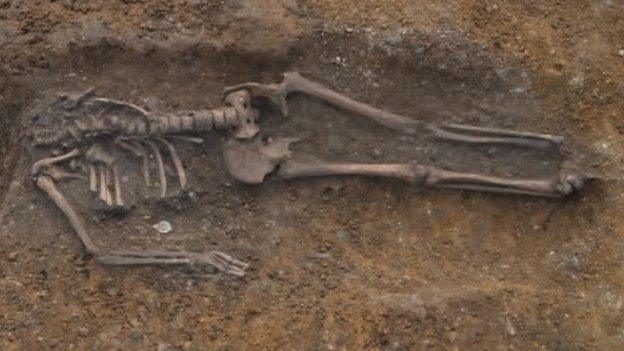Cambridge dig unearths history from Bronze Age to World War II
- Published

Skeletons, some without their skulls, were discovered during the dig
An archaeological dig in Cambridge has revealed the site's history from the Bronze Age to its role in World War II.
Excavation of the site in the north-west of the city began in October, ahead of a large-scale University of Cambridge development.
Roman roads and World War II practice trenches were amongst the discoveries.
Christopher Evans of Cambridge Archaeological Unit said: "Something that is going to be vibrant in the future was also vibrant in the past."
Archaeologists believe the site was first colonised for settlement in the Bronze Age and subsequently saw an Iron Age settlement.
'Surprise find'
Mr Evans said the dig was the one of the largest excavations to have taken place in Cambridgeshire and had unearthed a "thriving" Roman settlement, from around 60-350AD.
"The site is 1,200m long, it's covering 14 hectares," Mr Evans said.
"We're investigating this great gravel ridge and finding dense Roman settlement almost continuously along the length of it."
Four Roman cemeteries and 25 human skeletons, some with their skulls missing, have been discovered along with thousands of other remains.
Archaeologists said it was a surprise to find the zigzag ditches thought to be part of Cambridge's defence preparations for the war.
Mr Evans said: "It all testifies that things change and that archaeology often erodes long-held landscape stereotypes.
"It's part of what makes fieldwork so exciting."
- Published15 July 2012
- Published22 September 2010